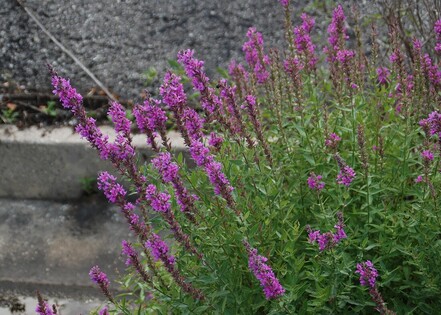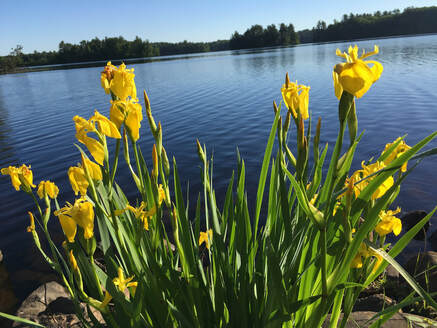|
by Melinda Myers Our lakes and waterways make Wisconsin a special place to live. If you are lucky enough to live on or near one of these bodies of water, it is easy to appreciate your role in protecting them. But even those living in spaces, large or small, away from them have an impact on our waterways’ health and beauty. Avoid aggressive and invasive plants whether gardening along a shoreline, managing a water feature, growing a rain garden, or tending a more traditional landscape space. Not only will you help the environment, but you will reduce your workload trying to manage plants that can take over the landscape and those that invade and damage our natural spaces.
Look first to natives when ordering plants for new or existing gardens. More nurseries are providing native and suitable water plants for Wisconsin gardens and waterways. Avoid online sources that are selling invasive plants that are harmful and not permitted to grow in Wisconsin. The University of Minnesota Sea Grant Extension Program published a helpful Water Garden Plants brochure, featuring invasive plants to avoid in the Great Lakes region as well as attractive and hardy native alternatives. Avoid invasive aquatic plants that have escaped and are upsetting the natural balance in some of our waterways and lakes. These invaders crowd out native plants, compromise wildlife habitat and reduce water quality. Assess what is already growing in your water feature, shoreline plantings, rain gardens and landscape. Some plants that were once considered outstanding have been found to be invasive. Remove and dispose of these. Place in a clear plastic bag marked invasive and throw in the trash. This is also a good time to eliminate those aggressive plants that take over your garden, water feature or shoreline planting. They require too much of your time to keep them in check and crowd out other plants that provide diversity of color, form, and texture as well as food for pollinators and birds. Purple loosestrife was a popular garden plant selected for its beautiful blooms and adaptability. It spreads by seeds and roots that readily root and grow in moist soil. This feature has helped it escape gardens and invade our wetlands. Japanese knotweed is a large plant that can quickly take over gardens and shorelines. Once established, plants can grow roots nine feet deep and spread 60 feet. These aggressive rhizomes (underground stems) can travel under roads to find sunlight on the other side. They even push through pavement, causing damage to walkways and roads. Yellow flag iris’ beauty masks its invasive nature. It tolerates wet and dry soils, wetlands, and floating aquatic mats. This adaptability gives it an unfair advantage to native plants in those areas. Its seeds or pieces of the rhizome can spread, establishing plantings in wetlands, forests, bogs, swamps, marshes, streams, and ponds. Its presence not only crowds out native plants but traps sediment, disrupting the flow of water. Remove and properly dispose of any of these and other invasive plants from your landscape and water features. Report any invasive plant infestations to the Wisconsin Department of Natural Resources. And spread the word, enlisting the help of fellow gardeners and landowners to do the same. Together we can make a difference growing beautiful gardens, creating shoreline plantings, and maintaining water features while protecting our lakes and waterways. Melinda Myers is the author of more than 20 gardening books. She hosts the The Great Courses “How to Grow Anything” DVD series and the Melinda’s Garden Moment TV & radio program. Myers is a columnist and contributing editor for Birds & Blooms magazine. Myers’ website is www.MelindaMyers.com.
1 Comment
2/19/2023 12:35:12 pm
A large garden area with all the educational aspirations and cultural practices amazes a lot of visitors. It’s a public garden with job opportunities for example the Art internship is popular here.
Reply
Leave a Reply. |
|
| North Country MGV | gARDEN bLOGS |
Location |
|


 RSS Feed
RSS Feed